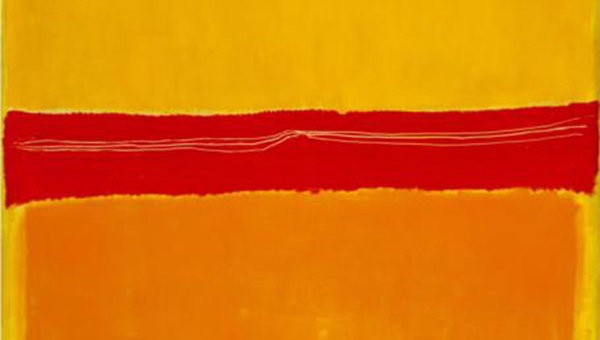The artist Mark Rothko is known mainly for his painting of the color field. But in almost 50 years of creativity, he created completely different pictures and eventually formed his response to the atmosphere of hostility that prevailed in the post-war world.
Bella Adceeva:
‘Mark Rothko, whose name is most often associated with the abstract painting of the color field, has done a long way in the art, in which there was a place for figurative painting, and the technique of tashism, and pure surrealism. His most famous works – multiforms and abstractions – the artist refused to explain and prevented any attempts at interpretation: the essence of art is art itself, the real manifestation of the artist’s attitude, Rothko asserted, who with the help of color alone succeeded in provoking both shock and hope, but more often Pain, fear and a sense of loneliness‘.
Expressive canvases of Mark Rothko have a mystical peculiarity – according to many viewers, pictures, when you observe them from a close distance (namely the artist himself insisted), cause strong emotions – a heightened sense of loneliness or fear, up to the fact that standing in front of them, Especially sensitive people can cry. Reflection of the tragic side of life is inclined to see in the work of Rothko and art historians – whether it be early works or the artist’s glorified multi-form. “The tragic experience of catharsis is the only source of any art … I’m not interested in the relationship of color and form or something in this spirit.” I’m interested only in expressing the basic human emotions – tragedy, ecstasy, despair, “Rothko wrote.
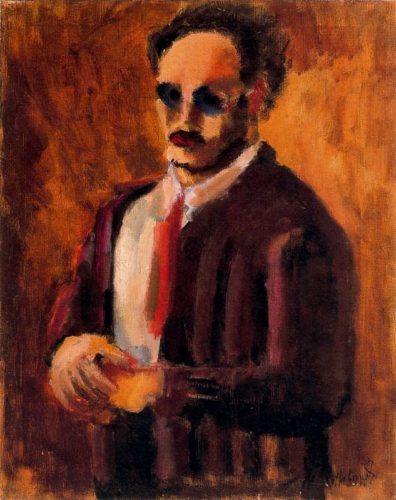
The son of Jewish immigrants who left Russian Dvinsk for a few years before the revolution, Marcus Rotkovich moved to New York from New Haven, Connecticut in 1923, at the height of the “jazz era”, when the boogie woogie Came from every Manhattan bar, and the world, exhausted by war, craved fun and entertainment. It was then that Rothko, who had just quit his studies at Yale University, got to the courses for Max Weber, who learned to understand art as a means of expression and whose influence is felt in many of Rothko’s early works. For several years in New York, he earned his living by teaching painting to children, repeating to his students the idea that painting should be given easily – being a process is not harder than singing.
His series of paintings depicting the New York subway, in particular, the most famous of them “The Entrance to the Metro” (1938) – is not at all what Rothko became famous in the next decades and with what it is associated up to now. This is not realism, but there are distinct figures of people and the architecture of the stations, although there is another trail – the recognizable work with color and the generally gloomy mood inherent in the late canvases of the artist. The very space of action – the underworld – in Rothko becomes a metaphor for inner experiences and unconscious anxiety, feelings, which during the Great Depression turned into impassable for many.
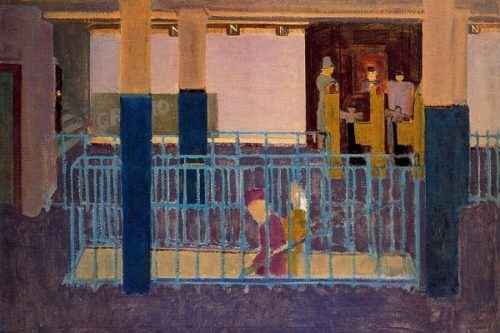
The worry that was in the air throughout the 1930s, Rothko is inseparable from urban landscapes – people in his paintings, whether lonely frozen figures or a pair of satellites – are in their usual environment and everyday concerns, but each of them is immersed in himself And is seized with anxiety, as, for example, in the “Street Scene” (1937). New York with its countless eateries, bars and cinemas, as well as immersed in their minds residents, in the 1930s and 1940s became an indicator of general depression not only for Mark Rothko – it was then that came to the fore American genre painting, a model of which We can consider the famous “Midnight” Edward Hopper. But Rothko’s painting even then was unlike the paintings of other artists, executed in a naturalistic manner – in how the edges of the platform, walls, and columns of subway stations are depicted, one can see Rothko’s first steps towards his abstract painting, the understanding that art must express life through Emotions, not descriptions.
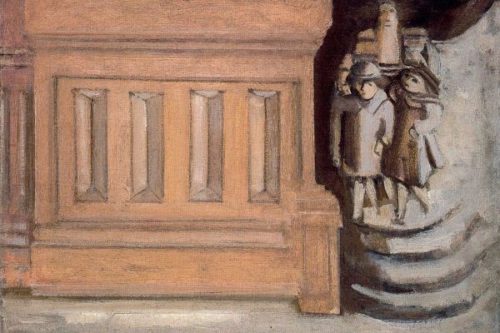
Other Rothko paintings of the same period, mostly called Untitled (unnamed, nameless), depict the figures of people with anxiety, and sometimes horror in the eyes of looking at something beyond the viewer’s view. One of the most revealing works is a portrait of a nude in the corner of the room (1937-38), and a picture with two figures by the window (1938). The spectator watching these pictures feels no less uncomfortable and restless than their heroes.
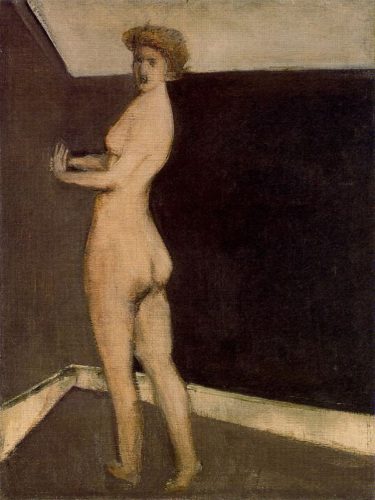
In the late 1930’s and early 1940’s, New York conquered surrealism – some innovative artists, including Salvador Dali, moved to the States from Europe. Mark Rothko, along with Adolf Gottlieb and Barnett Newman, spend a lot of time discussing the ideas of Dali, Joan Miró, Max Ernst and Pete Mondrian, and inevitably find themselves under their influence. Surrealistic period of creativity Rothko, however, again turns out to be unlike anybody else, and speaking about the influence, here along with the pioneers of the European avant-garde one should mention the “Birth of Tragedy” by Friedrich Nietzsche and mythology with its symbolism. At the same time, Rothko was fond of the works of Freud and Jung, and in 1940 he left painting even for a time to fully immerse himself in the theory of the collective unconscious and the archetypal interpretation of dreams.
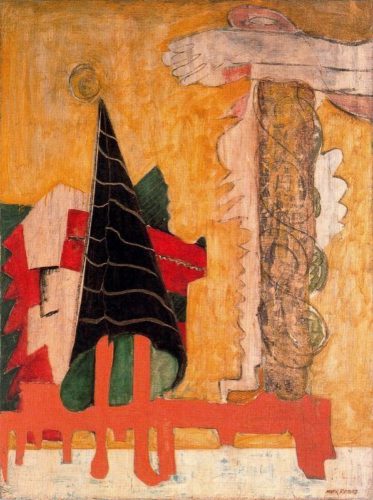
The result was a new direction in creativity when Rothko renounced the image of life with the help of modern images and set his goal with the help of mythological symbols to free a person from the void filling him.
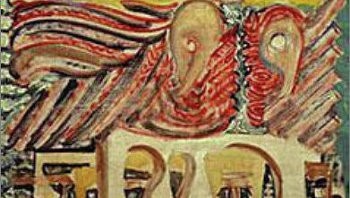
Surrealistic pictures of this period – “Sacrifice of Iphigenia”, “Antigone”, “Hierarchical Birds” – no less gloomy than his previous works: here are palms, folded in entreaties, and half of the human body, and fragments of hands and feet. Picture The Omen of the Eagle (the name can be translated as “sign” or “sign of the Eagle”), the artist called “the embodiment of a tragic idea.”
Rothko’s art again changed in the mid-1940s, when the abstract paintings replaced the mythologems, in which some experts see references to the “Birth of Venus” by Sandro Botticelli, others – a reflection of events in the artist’s personal life – that’s when Rothko met his second wife. His painting “Slow spinning on the edge of the sea” (1945) is much lighter in a mood, and in an abstract image, you can see two human figures subordinate to the relationship of color and form.
The words of the artist, who speaks of his paintings as an independent form of life beyond his control, make it clear that painting even then was for Rothko more meditation than action.
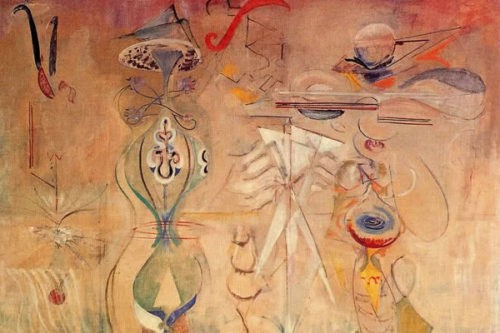
The hostile atmosphere of the postwar world pushes Mark Rothko to a new creative search, which, from the technique of tachism (abstract painting with spots), led him to the quintessence of creativity – the famous Rothko Chapel.
Horrors of war and its senselessness became one of the main themes of creative reflection of the second half of the 1940s and 1950s. A close friend of Rothko Barnett Newmann then pronounced the words that became a manifesto for many artists – “There is no more opportunity to write as before and the same as before” – and he left the painting for four years. At this time, Mark Rothko travels to Europe, where he visits the Medici library in Florence, built according to the designs of Michelangelo, and also seeks inspiration from the works of his two favorite artists – Rembrandt and William Turner. Neither one nor the other did not affect the next rebirth of Rothko as the “Red Studio” Henri Matisse, which the artist saw in the New York Museum of Modern Art in 1949 when he stood at the painting for several hours. The canvas of the French painter, known for his innovative treatment of color, indicated Rothko’s further path – then he began to write first multiforms (one of the well-known examples – No.9, 1948), and then came to his own style that made him one of the most significant Artists of his generation.
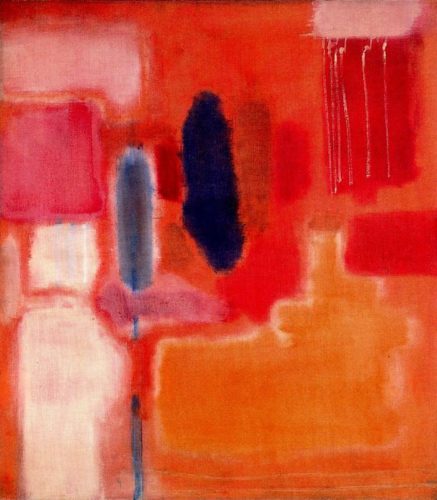
In the early 1950s Mark Rothko’s abstract expressionism became something completely new in American painting. Speaking about the paintings of other artists, often having a calming, relaxing effect, Rothko said that his works “have the opposite goal” and are written not for history or studios, but for people whose reaction was the only value that brought satisfaction to the artist.
And then, and now experts agree that his painting of the color field – not about what emotions can cause color, but about how Rothko makes color so act on the viewer.
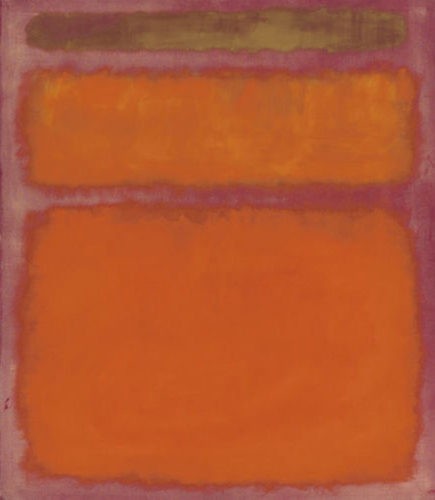
The depth, embedded in Rothko’s canvases, made him along with Jackson Pollock the most authoritative American artist, his paintings were taken to Europe to show that there is depth in the art of the United States. In the period from 1954 to 1957, Rothko’s work tripled in price, and when in 1955 the owners of the pathos restaurant “Four Seasons”, located in the skyscraper Seagram building, decided to decorate the walls of the institution with the works of a modern artist, the choice could only fall on Mark Rothko. The size of the contract was, in the current exchange rate, two and a half million dollars, and for about a year Rothko worked on frescoes, and his main goal, by his own admission, was to make the moneybags who spent time in the restaurant feel trapped. He was going to surround people whose tables were bursting with caviar and lobsters, with a continuous cloth, to influence them with the power of art.
Rothko wrote his abstract paintings for the rest of his life, in recent years, focusing on a saturated black color. The most famous paintings of this period and, according to critics, the crown of the artist’s entire work were 14 paintings written by the order of philanthropists John and Dominique De Menil for the Chapel located in Houston. In front of the entrance to the Chapel is the sculpture of Barnett Newman dedicated to Martin Luther King. Today the Rothko Chapel, open to people of all denominations, has become not just an artist’s heritage, but also a place associated with the idea of universal equality.
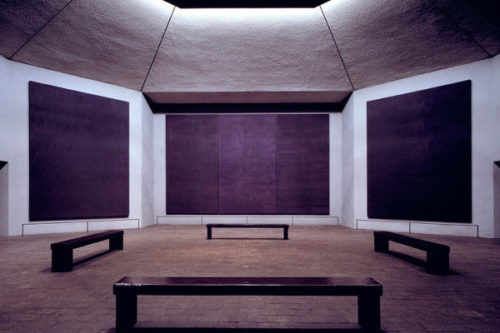
Success only exacerbated the sense of isolation that the artist experienced. In the light of his philosophy, which exposed the widespread commercialization of art, today’s price records also look ambiguous (“Orange, Red, Yellow” left in 2012 for $ 86.9 million), which the artist’s pictures are again and again set at auctions – this is Rothko’s victory Or his defeat? Be that as it may, the main meaning and purpose, which he laid down in his paintings – an appeal to the basic human emotions – is contained in them today, as can be seen, for example, in the London gallery Tate. There, his murals, created for the skyscraper Seagram, were brought on February 25, 1970. On a terrible coincidence, on the same day, Assistant Rothko found the artist dead in the kitchen of his apartment, in a pool of his own blood.






